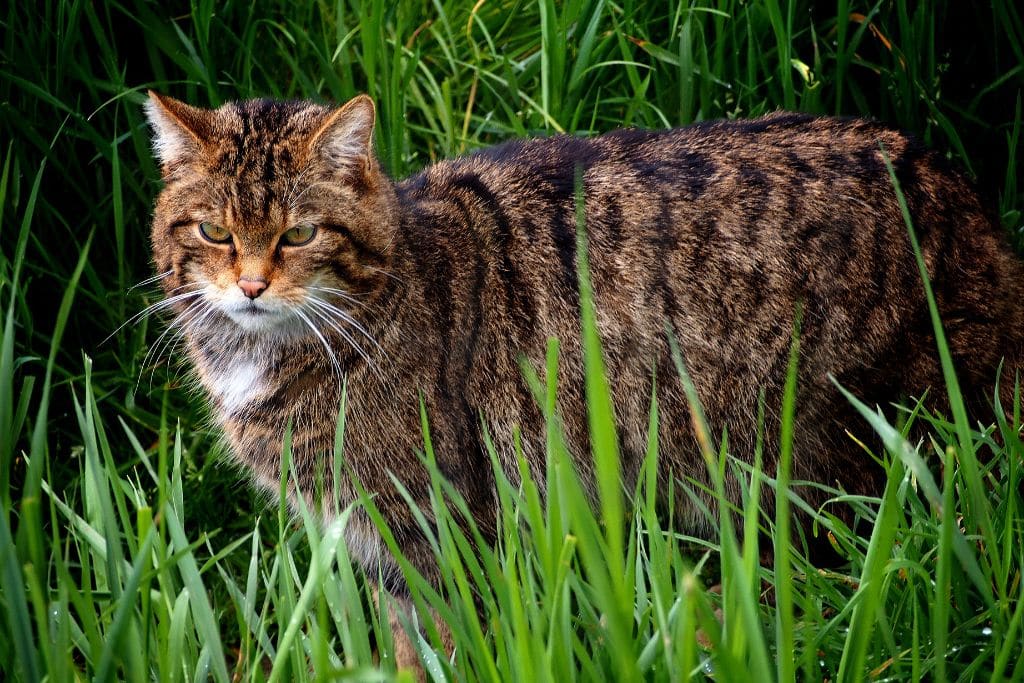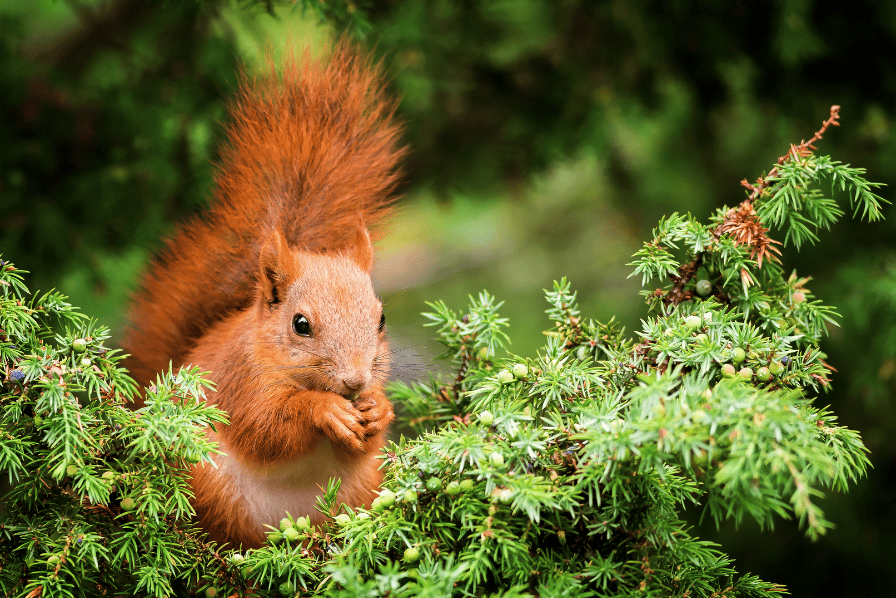A recent study by London’s Natural History Museum found that Britain has lost nearly half of its biodiversity since the Industrial Revolution, a number far below the global average of 75%. Rampant human activities and land development have caused widespread habitat loss and degradation in the country, with experts warning that this continued rate of biodiversity loss will lead to an irreversible ecological meltdown and crisis, threatening the future of global food security. To date, at least a quarter of native mammals in Britain are at risk of extinction and more species will likely follow as humanity continues to degrade the environment and as the planet warms. These are just some of the most notable endangered species in the UK that are in dire need of protection.
—
Endangered Species in the UK
1. Hedgehog
Despite its coat of prickly, sharp spines, the hedgehog has become widely popular; domesticated hedgehogs are now highly sought after as a household pet. In rural Britain however, the native species has been in sharp decline over the past 70 years. In 1950, estimates suggested there were about 36 million individuals in the wild, but that number plummeted to a mere one million in 2013. The largest declines are recorded in the eastern half of the country.
Climate change-induced temperature rises and overall warmer winters have impacted their hibernation patterns, resulting in the mammal struggling to forage for food. Urban and road development have limited their natural habitats, particularly across farmlands. Ongoing conservation efforts include increasing the legal protection of hedgehogs in the Wildlife and Countryside Act and encouraging more wildlife-friendly gardens in urban landscapes.
2. Red Squirrel
Once widespread and commonly found across the UK, the iconic red squirrel – with its signature russet brown fur and bushy tail – has since become a rare sighting as a result of invasive species and habitat fragmentation. The introduction of grey squirrels from North America in the early 20th century has devastated the population of the species. Grey squirrels are larger in size than its red counterparts, making them stronger competitors for foods like nuts and seeds. They’re also highly destructive; grey squirrels damage and strip tree barks, leaving trees vulnerable to disease and less habitat for red squirrels. The invasive species is also a carrier of the parapoxvirus, which is deadly to the red squirrel. Today, red squirrels are only found in Scotland, Northern Ireland and the far north of England with an estimated 140,000 individuals compared to several million grey squirrels across the UK.
3. Water Vole
This semi-aquatic rodent spends most of its day in rivers and streams, but digs burrows along riverbanks to rest at night, which helps maintain river ecosystems, as well as allow other animals and plants to thrive. Once found in almost every waterway in Scotland, England and Wales, water voles have seen a 94% drop in population within the past three decades and lost about 90% of its historic range, driving the species to the brink of extinction. The drastic population decline is attributed to the arrival and predation of the non-native American mink – for fur farming – and water pollution from industries. Though the mammal has three to four litters each year, it is not enough to keep pace with all the various threats to the species. However, UK conservation officials are taking measures to restore riverbanks, clean up waterways, and implement reintroduction programmes.

4. Beaver
It’s not all doom and gloom. Among this list of endangered species in the UK, the beaver has been on the road to recovery and slowly bouncing back from its status of being near extinction. Beavers are an important species as the dams they build for their homes double as a tool for filtering and cleaning water, thereby creating a healthy environment for richer biodiversity. But they were heavily hunted about 400 years ago for their prized pelt (and meat) in the fur trade. Coupled with water pollution, the semi aquatic mammal was all but extinct. Thanks to decades of conservation work and rewilding and reintroduction programmes in Devon and Scotland, beaver population numbers have been on the rise.
5. Scottish Wildcat
With only about 115-315 individuals remaining in the wild, the Scottish Wildcat is one of the most critically endangered species in the UK. Twice the size of a domestic cat and much more ferocious, this feline species are mostly found today treading across the woodlands and pastures of the Scottish Highlands, hunting for small mammals, birds, invertebrates and even reptiles.

Habitat loss from deforestation and animal trade have near decimated the Scottish wildcat population, but hybridisation has exacerbated the decline. When wildcats crossbreed with domestic (feral) cats, it dilutes the wildcat gene until it is completely wiped out. Some experts estimate that there are about 3,000 wild feral cats to every one purebred wildcat. To combat this, conservation organisations are working to neuter feral cats in the Scottish Highlands to help prevent crossbreeding.
6. Hazel Dormouse
This nocturnal golden-furred mammal is endemic to the UK but is now only found in Southern England, South Wales and along the English/Welsh border. The hazel dormouse is also an arboreal species, meaning they live primarily in trees, and feed mostly on fruits, nuts, tree flowers and insects. Due to deforestation and changing practices in woodland management, particularly in ancient woodland and hedgerows, the small rodent has lost significant habitats, becoming more isolated and vulnerable. Major habitat loss and fragmentations have resulted in a 75% population decrease over the last 25 years. Dormice are strictly protected by law and there are ongoing efforts to reintroduce to species in places they have been previously extinct. Though areas of suitable woodland habitat are scarce and long periods of supplementary feeding are required, organisations such as the People’s Trust for Endangered Species have successfully returned the hazel dormouse to 12 counties.
7. Grey Long-Eared Bat
As the name suggests, this particular bat species features ears nearly as long as its body and is incredibly rare in the UK – the country marks the northern edge of its range. It resides and hunts over grasslands, woodland edges for prey including moths, flies and small beetles at night. But urban development and land conservation for agricultural purposes have caused the grey long-eared bat to lose roosts – where bats rest – while traffic and artificial night lighting have increased the risk of vehicle collisions and impact hunting activities. Today, there are very few confirmed sightings of the species, including areas close to the coast in lowland areas of southern England and the Isle of Wight. They are also considered extinct in Scotland, Northern Ireland, and Wales.
You might also like: The Successful Reintroduction of the Extinct Eurasian Beaver in Serbia


















